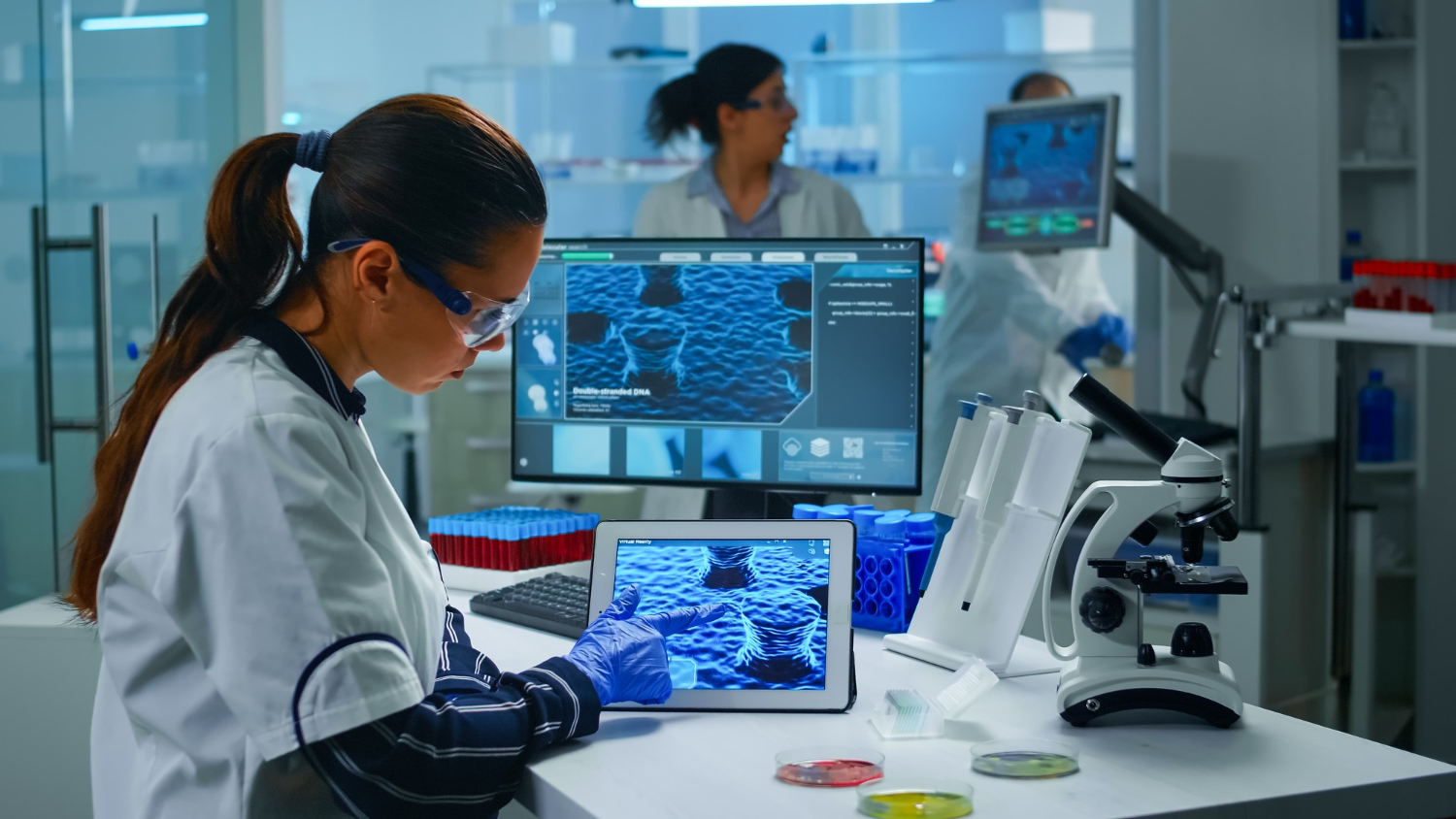
3D Printing in Medicine
About the course
Target group
Biomedical and clinical engineers, surgeons and medical professionals, 3D printing specialist in healthcare, hospital innovation teams, students and academics in biomedical fields
Key words
Course introduction
This course provides a technical overview of 3D printing and its integration into healthcare and biomedical workflows. It outlines the end-to-end process, starting with CAD modeling to generate precise digital designs for applications such as implants, prosthetics, and surgical tools. Learners will examine segmentation methods for processing imaging data from CT and MRI scans, enabling the creation of patient-specific models compatible with additive manufacturing.
The course details slicing techniques, focusing on layer height, infill density, and support structures to optimize designs for 3D printing. It also addresses post-processing steps, including surface finishing, sterilization, and coating processes, ensuring compliance with functional and regulatory standards. Key topics include the production of implantable and patient-contact devices, with emphasis on material selection, biocompatibility, and adherence to FDA, MDR, and ISO standards.
Emerging technologies such as bioprinting, advanced material development, and AI-assisted design are explored, along with applications in large-scale manufacturing and space exploration. Case studies are used to demonstrate practical uses, including 3D-printed implants, anatomical models, and components for industries like aerospace and construction.
Upon completion, learners will understand the technical aspects of additive manufacturing, including its challenges and regulatory considerations, and its expanding role in healthcare and beyond. The course is designed for professionals and students seeking to apply 3D printing technologies in highly regulated and specialized fields.
Details to know

Downloadable certificate
Share your certificate on Linkedin

Assessment
17 Quizzes
Learning outcomes
Module 1
- Competence
- Is able to describe the principles, history, and key technologies of 3D printing and assess their relevance in health and care.
- Knowledge
- Knows the evolution and technological advancements in 3D printing.
- Understands the primary applications of 3D printing in medicine, including anatomical modelling, surgical tools, and prosthetics.
- Skills
- Identifies key milestones in the development of 3D printing.
- Explains the impact of additive manufacturing in medical applications.
- Assesses the suitability of 3D printing for different medical applications.
- Identifies challenges and opportunities in clinical adoption.
Module 2
- Competence
- Is able to analyse and compare key additive manufacturing techniques for biomedical applications.
- Knowledge
- Knows the working principles, material compatibility, and applications of additive manufacturing processes (e.g., Material Extrusion, Binder Jetting, Powder Bed Fusion, etc.).
- Understands process parameters and post-processing techniques required for high-quality biomedical prints.
- Skills
- Differentiates between additive manufacturing technologies based on their applications.
- Evaluates the advantages and limitations of each method in medical settings.
- Selects appropriate post-processing methods to enhance 3D-printed medical parts.
- Adjusts process variables to optimise print quality and functionality.
Module 3
- Competence
- Is able to create and optimise CAD models for biomedical 3D printing applications.
- Knowledge
- Knows the principles and workflows of CAD modelling for 3D printing.
- Understands common challenges in biomedical CAD design.
- Skills
- Designs CAD models for anatomical structures and medical devices.
- Modifies CAD designs to meet printing and post-processing requirements.
- Identifies and resolves issues related to geometry, mesh quality, and model integrity.
Module 4
- Competence
- Is able to configure slicing software and adjust G-code to optimise 3D printing processes in health and care.
- Knowledge
- Knows the role of slicing in 3D printing and key parameters affecting print quality (e.g., layer height, infill density, support structures).
- Understands G-code modifications for printer control and performance.
- Skills
- Adjusts slicing parameters to enhance print resolution and durability.
- Troubleshoots slicing-related print defects.
- Interprets and customises G-code for optimised medical 3D printing.
- Implements G-code commands to improve precision and efficiency.
Module 5
- Competence
- Is able to process biomedical imaging data to create accurate 3D models for patient-specific applications.
- Knowledge
- Knows the role of biomedical imaging (CT, MRI) in 3D model generation.
- Understands challenges and advancements in imaging-based 3D printing.
- Skills
- Processes imaging data for segmentation and anatomical reconstruction.
- Identifies key tools and workflows for generating patient-specific 3D models.
- Evaluates segmentation techniques for accuracy and usability.
- Selects appropriate software tools for imaging-to-print workflows.
Module 6
- Competence
- Is able to apply post-processing techniques and assess regulatory standards for 3D-printed medical devices.
- Knowledge
- Knows common post-processing techniques (e.g., sterilisation, surface finishing) for biomedical 3D printing.
- Understands the regulatory landscape for 3D-printed medical devices.
- Skills
- Selects and applies post-processing methods suitable for medical-grade prints.
- Ensures print quality meets functional and biocompatibility standards.
- Identifies relevant medical device classifications and compliance requirements.
- Assesses regulatory challenges and solutions for patient-contact and implantable devices.
Module 7
- Competence
- Is able to evaluate current and emerging applications of 3D printing in health and care and related industries.
- Knowledge
- Knows the diverse applications of 3D printing across health and care, construction, and education.
- Understands future trends, including bioprinting, AI-driven design, and sustainable manufacturing.
- Skills
- Compares industry-specific advancements in additive manufacturing.
- Identifies interdisciplinary opportunities for 3D printing applications.
- Evaluates the potential of bioprinting for regenerative medicine and drug testing.
- Assesses the impact of AI and novel materials on the evolution of 3D printing.
More detailed Learning Outcomes can be found in module introductions.
Foundations of 3D Printing in Medicine
Lessons
Introduction 1. Introduction to 3D Printing 2. 3D Printing in Medicine ReferencesAdditive Manufacturing Technologies
Lessons
Introduction 1. Additive Manufacturing Technologies 2. Material Extrusion in Additive Manufacturing 3. Binder Jetting and Material Jetting 4. Powder Bed Fusion and Directed Energy Deposition ReferencesCAD Modelling and Design Principles for 3D Printing
Lessons
Introduction 1. CAD Modelling Basics for 3D Printing 2. CAD Design and Drawings in 3D Printing ReferencesSlicing and G-code: Preparing Models for 3D Printing
Lessons
Introduction 1. Introduction to Slicing for 3D Models 2. Understanding G-code for 3D Printing ReferencesBiomedical Imaging and Segmentation for 3D Printing
Lessons
Introduction 1. Biomedical Imaging and its Integration with 3D Printing 2. Segmentation and Patient-Specific 3D Models ReferencesPost-Processing and Regulatory Standards for Medical 3D Printing
Lessons
Introduction 1. Post-Processing Techniques for 3D-Printed Components 2. Implantable and Patient-Contact 3D-Printed Models ReferencesApplications and Future Perspective for 3D Printing
Lessons
Introduction 1. Real-World Applications of 3D Printing 2. Future Perspectives of Additive Manufacturing ReferencesPractical Uses of 3D Printing in Clinical and Surgical Applications
Lessons
Introduction 1. Practical Uses of 3D Printing in Clinical and Surgical Applications References Course Evaluation
Co-funded by the Erasmus+ programme of the European Union under Grant Agreement number 101056563.

Co-funded by the European Union. Views and opinions expressed are however those of the author(s) only and do not necessarily reflect those of the European Union or EACEA. Neither the European Union nor the granting authority can be held responsible for them.

